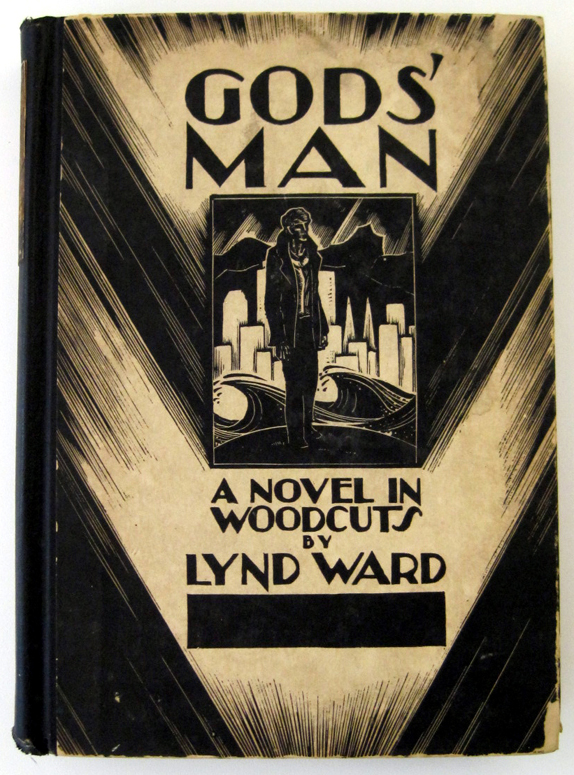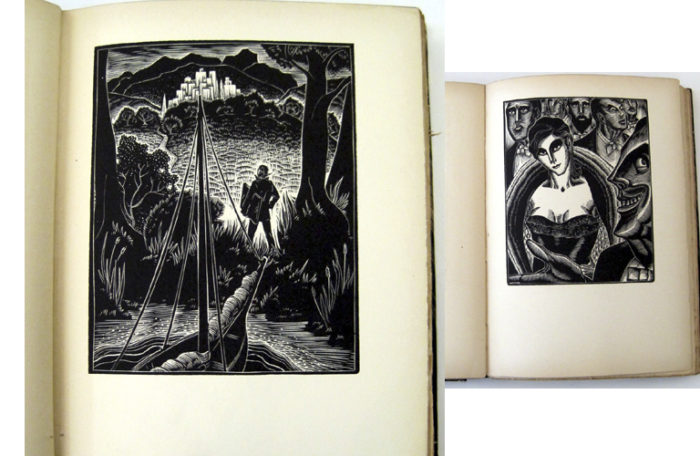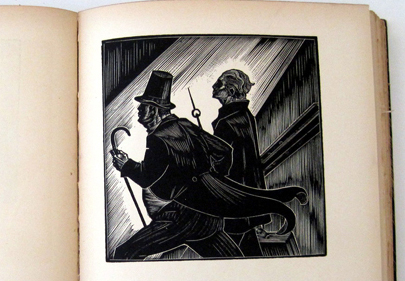
Front cover, Gods’ man : a novel in woodcuts, by Lynd Ward.
This book is related to objects and themes in the exhibition The Jazz Age: American Style in the 1920s, now on view through August 20, 2017.
Cooper Hewitt Smithsonian Design Library regularly collaborates with Cooper Hewitt on exhibitions and publications, providing images, books and other related materials from its Special Collections that complement the theme of a show. Often, the Library is asked to seek out new materials for possible inclusion in upcoming exhibitions. In summer 2015, while looking for books and related materials from the 1920s and early 30’s for the exhibition The Jazz Age: American Style in the 1920s, the Library acquired several novels selected for their Art Deco-style graphic dustjacket, including a beautifully illustrated book with a striking black and white dust jacket titled Gods’ man : a novel in woodcuts by the artist printmaker Lynd Ward (1905-1985). It was what was referred to at the time of its publication in 1929 a “wordless novel”—what we can refer to today as the “graphic novel.” It is a narrative genre that uses sequences of captionless pictures to tell a story. Gods’ man was the first of six wordless novels created by Lynd Ward during the years 1929–1974, and the first American wordless novel.

The Brush and The Mistress
The technique of woodcut and wood engraving printmaking can create large contrasts of light and dark; in this novel, they fill the story with shadows, foreboding, dark characters, ominous encounters and despair. 139 wood engravings tell the story of a young artist who journeys to a big city and signs away his soul to a mysterious stranger, a faceless top-hat-wearing man, for a magic paintbrush. The images tell the story of his subsequent isolation, corruption and troubles with life in a big city, and the serious consequences of his bargain with the evil stranger.

Interior illustration
Reading this book is like reading a comic book, but without the benefit of the word balloons to give a hint of what is happening. Only the chapter headings of I: The Brush, II: The Mistress, III: The Brand, IV: The Wife, and finally V: The Portrait outline the sequence of events.
The Cooper Hewitt Library collects in the areas of graphic design and book illustration; this is its first wordless, “graphic” novel, and a great addition to its collections.
Elizabeth Broman is a Reference Librarian at the Cooper Hewitt, Smithsonian Design Library.